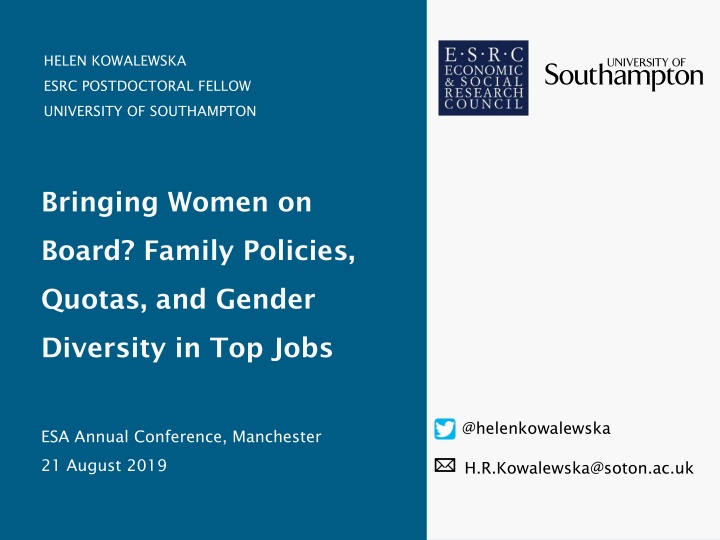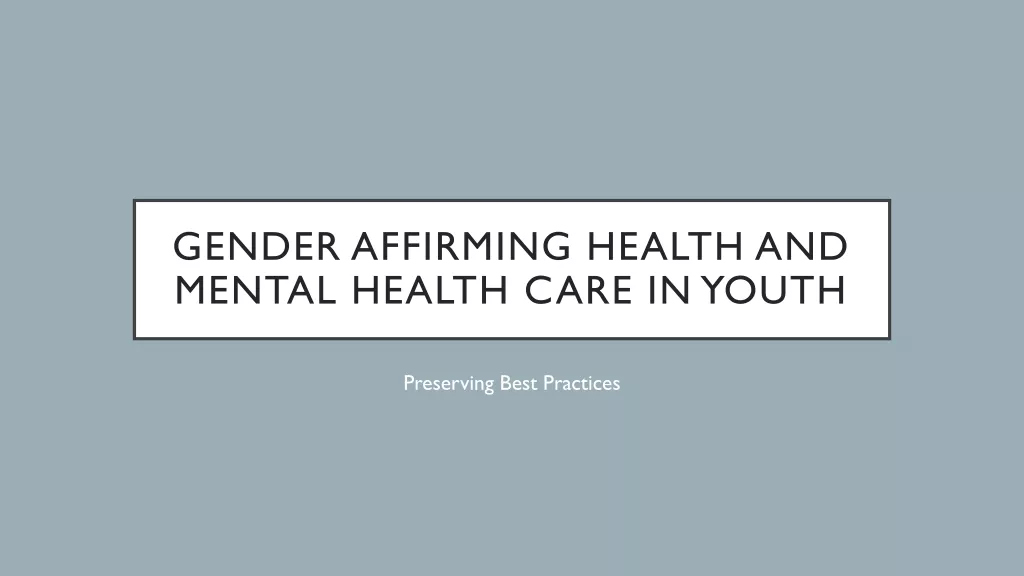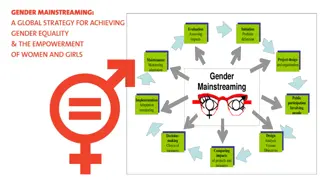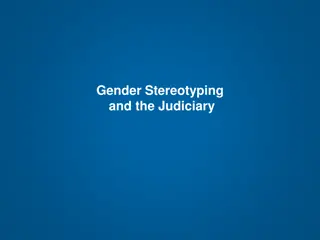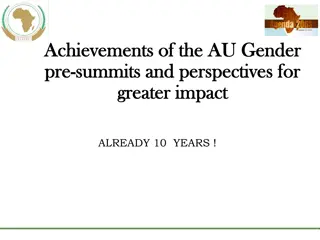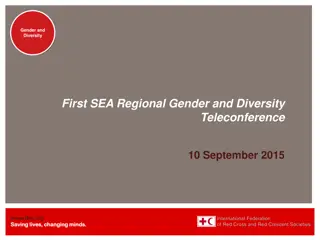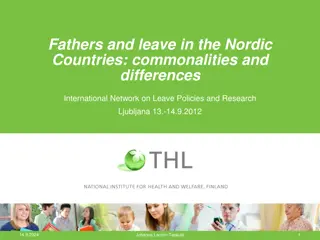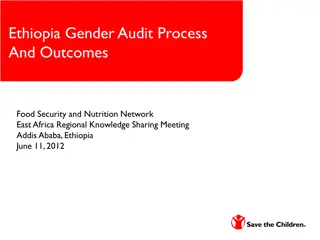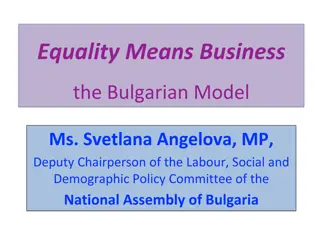Women on Boards: Policies, Quotas, and Gender Diversity in Top Jobs
Generous welfare states attract women to employment, but hinder their progress to managerial roles. Existing research overlooks women's access to board positions. Cross-national data shows disparities in women's representation on boards. Different policy approaches exist globally, including hard quotas and soft regulations. Gender-diverse boards can have positive impacts on company outcomes and women in the workforce.
Download Presentation

Please find below an Image/Link to download the presentation.
The content on the website is provided AS IS for your information and personal use only. It may not be sold, licensed, or shared on other websites without obtaining consent from the author.If you encounter any issues during the download, it is possible that the publisher has removed the file from their server.
You are allowed to download the files provided on this website for personal or commercial use, subject to the condition that they are used lawfully. All files are the property of their respective owners.
The content on the website is provided AS IS for your information and personal use only. It may not be sold, licensed, or shared on other websites without obtaining consent from the author.
E N D
Presentation Transcript
HELEN KOWALEWSKA ESRC POSTDOCTORAL FELLOW UNIVERSITY OF SOUTHAMPTON Bringing Women on Board? Family Policies, Quotas, and Gender Diversity in Top Jobs @helenkowalewska H.R.Kowalewska@soton.ac.uk ESA Annual Conference, Manchester 21 August 2019
Generous welfare states bring women into employment Scandinavian countries = gender equality leaders (e.g. Esping-Andersen, 2002; Gornick & Meyers, 2009; Mahon, 2002): Well-developed leaves and childcare services Family-friendly public- sector jobs Fig. 1 Gender employment gap by country (percentage points), 2017 Source: Eurostat
The welfare state paradox Mandel & Semyonov, 2006 Policies that bring women into employment also hamper women s progress to managerial jobs in the private sector Public-sector Women s human employment is Fig. 2 Share of working women who are managers, 2017 capital deteriorates dominated by during leaves women US UK 9.2% 8.6% US Finland 2.3% 4.9% Strict employment Sweden Statistical protection worsens discrimination the problem (Est vez- Abe, 2005, 2006)
But existing research does not consider women s access to board positions
Paradox theory cant explain cross-national patterns of women s board membership 50% SWE: 37% 40% 30% USA: 23% 20% 10% 0% HUN NOR POL EST AUS AUT DEU CZE ESP SLV UK JPN GRE LUX PRT SLK DEN FIN SWE FRA ITA BEL IRE NLD CHE USA Fig. 3 Women s share of board seats, 2018 Sources: EIGE; MSCI; Spencer Stuart
Policy approaches to women on boards across 24 OECD countries (2018) Hard quotas (5) Soft regulation (9) No regulation (10) Belgium (33% by 2017) France (40% by 2017) Germany (30% by 2016) Italy (33% by 2015) Norway (40% by 2008) Australia Austria Denmark Finland Japan Netherlands Spain Sweden UK Czech Republic Estonia Hungary Ireland Luxembourg Poland Portugal Slovakia Slovenia US
Gender-diverse boards can benefit everyone Trickle-down benefits for other women (Kowalewska, 2019) Improved company outcomes
This study To identify the conditions under which gender- AIM diverse boards are achieved. Fuzzy-set Qualitative Comparative Analysis of 24 METHOD OECD countries using fsQCA software 3.0 (+ sensitivity analyses). Eurostat, OECD s Family Database, Government at a Glance Database, and Employment and Labour DATA SOURCES Market Statistics, Deloitte, EIGE, Multilinks Database, national sources
Fuzzy-set QCA: an illustration Conditions Outcome, Y X Y is present Y is absent B A Therefore: X+B OR A => Y
This study Condition #1 Outcome Condition #4 Condition #3 Condition #2
Condition #1 Welfare State Intervention Index Outcome Condition #4 Condition #3 Condition #2
Table 1. Measures used in the Welfare State Intervention Index. Max. women- friendliness (Index score = 100) Min. women- friendliness (Index score = 0) Leave policies Duration of paid leave for mothers 52 weeks 14 weeks Average replacement rate 100% 20% Childcare services Spending on childcare per capita (US$ PPP), average across 0-4 age groups $9,589 $0 Enrolment rates of under-5s 90% 10% Elder care services Share of 65+ in home/residential care 22% 0% Welfare state as employer % of workforce employed in general government 35% 10%
Condition #2 Welfare State Intervention Index Outcome Condition #4 Condition #3 Strict employment protection
Condition #3 Welfare State Intervention Index Outcome Condition #4 Hard quota Strict employment protection
Condition #4 Welfare State Intervention Index Soft Outcome Hard quota regulations Strict employment protection
Outcome Welfare State Intervention Index 30% women on boards Soft Hard quota regulations Strict employment protection Women must comprise a critical mass of 30% of board members to exert power and influence (e.g. Konrad et al., 2008; Krook, 2009; Torchia et al., 2011)
Results FRA, NOR DEN, FIN, SWE Welfare State Intervention Index Soft regulations AUS, IRE,JPN, NLD, UK Hard quota Hard quota LUX Strict employment protection CZE, EST BEL, DEU, ITA AUT, PRT, ESP 30% women on boards HUN, POL, SVK, SVN, US <30% women on boards
Results FRA, NOR DEN, FIN, Two pathways to the SWE outcome: Welfare State Intervention Index 1. Hard quota OR 2. Soft regs + Soft regulations AUS, IRE,JPN, NLD, UK generous welfare Hard quota Hard quota LUX state + weak Strict employment employment protection CZE, EST protection BEL, DEU, ITA AUT, PRT, ESP 30% women on boards HUN, POL, SVK, SVN, US <30% women on boards
Take-home message Hard quotas work, but so can policy soft , voluntary regulations though government intervention is required Soft quotas can work Soft quotas only work under certain conditions. Elsewhere, hard quotas may be necessary But not everywhere Highly-skilled women s access to top jobs need not forever be blocked by generous family policies Soft quotas can offset the negative effects of generous welfare states
Thank you for listening! @helenkowalewska H.R.Kowalewska@soton.ac.uk
Table 2. Analysis of necessary conditions. Outcome: GD Consistency WI 0.91 ~WI 0.61 EP 0.79 ~EP 0.61 HQ 0.48 ~HQ 0.52 SQ 0.45 ~SQ 0.55 TA 0.28 ~TA 1.00 Notes: ~means NOT or the absence of the condition: ~? = 1 ?. Bold indicates that condition is necessary for gender diversity on corporate boards. Source: own calculations. Outcome: ~GD Consistency 0.57 0.66 0.60 0.57 0.09 0.91 0.46 0.54 0.28 0.83 Coverage 0.54 0.38 0.45 0.40 0.71 0.20 0.30 0.31 0.39 0.36 Coverage 0.77 0.94 0.78 0.86 0.29 0.80 0.70 0.69 1.00 0.74
Table 3. Truth table. Conditions EP 0 1 1 0 0 0 1 1 1 1 0 0 1 1 0 0 Outcome GD 0 1 0 1 0 0 0 0 1 Number of cases 5 4 3 3 3 2 2 1 1 0 0 0 0 0 0 0 HQ 0 1 0 0 0 0 0 0 1 1 1 1 1 0 1 1 SQ 1 0 0 1 0 0 1 1 0 1 1 0 1 0 1 0 Row 1 2 3 4 5 6 7 8 9 10 11 12 13 14 15 16 WS 0 1 1 1 0 1 0 1 0 1 1 1 0 0 0 0 Rows 10-16: logical remainders. impossible remainder, i.e. cannot empirically exist, as countries either have hard quotas (belong to HQ) OR soft quotas (belong to SQ) therefore assigned a score of 0 for GD. good counterfactual based on theory: ~HQ is necessary for ~GD therefore, ~GD cannot exist in the presence of HQ; hence countries with HQ, i.e. compulsory quotas requiring at least 30% women on boards, will surely have at least 30% of women on boards and so are assigned a score of 1 for GD. A sensitivity analysis (SA1) gives insight into the impacts of this assumption on the results. Source: own calculations.
Table 4. Fuzzy set membership scores in causal pathways and the outcome. Pathways 1 Country Australia Austria Belgium Czechia Denmark Estonia Finland France Germany Hungary Ireland Italy Japan Luxembourg Netherlands Norway Poland Portugal Slovakia Slovenia Spain Sweden UK US Consistency Raw coverage Unique coverage Solution coverage (1+2) Pathway 1: HQ Pathway 2: WI*~EP*SQ Source: own calculations. 2 Outcome 0.48 0.24 0.64 0.01 0.53 0.00 0.62 0.84 0.57 0.01 0.14 0.59 0.00 0.01 0.07 0.91 0.01 0.02 0.06 0.24 0.04 0.74 0.43 0.12 0.00 0.00 1.00 0.00 0.00 0.00 0.00 1.00 1.00 0.00 0.00 1.00 0.00 0.00 0.00 1.00 0.00 0.00 0.00 0.00 0.00 0.00 0.00 0.00 0.71 0.48 0.48 0.36 0.37 0.00 0.00 0.54 0.00 0.56 0.00 0.00 0.00 0.23 0.00 0.39 0.00 0.49 0.00 0.00 0.24 0.00 0.00 0.13 0.69 0.46 0.00 0.69 0.42 0.42 0.91
Table 5. Details of the sensitivity analyses. Sensitivity analysis Impact on results New solution: EP*HQ + WI*~EP*SQ; country placements unchanged. Thus, hard quotas are only effective if combined with strong employment-protection legislation. However, this may be because those countries that have introduced hard quotas also have stringent employment protection, rather than strong employment-protection legislation being a necessary part of the causal recipe. Dropped assumption regarding good counterfactuals by leaving logical remainders with a score of 1 for HQ empty. Dropped Denmark as it is (partially) uncovered, i.e. its membership in the outcome exceeds that in the second causal pathway. Solution coverage increases from 0.89 to 0.91; country placements unchanged. Dropped France and Norway as they are typical cases, with virtually equal (and relatively high) membership in both the solution and the outcome. Solution coverage increases from 0.89 to 0.90 and consistency decreases from 0.77 to 0.73; country placements unchanged. Based the Employment Protection condition on employment protection legislation for labour market insiders , i.e. regular employees, only (EP_R). Solution: HQ only and coverage decreases to 0.51. Reduced the breakpoints for the outcome, GD, by 5%: 40% = 1.0; 25% = 0.5; 15% = 0.0. Solution coverage decreases from 0.89 to 0.73; country placements unchanged.
Table A1. Variables and data sources. Conditions Welfare Interventions (WI) Index comprising: (1) maternity and parental leaves available to mothers; (2) spending on childcare and enrolment rates; (3) coverage of elder care services; (4) share of workforce employed in general government. Data sources and years are as follows: (1) The OECD Family Database, 2018. (2) The OECD Family Database for spending data, 2015 (2014 for Poland); The OECD Family Database and EU-SILC survey for enrolment rates, 2016/17 (2015 for Japan, 2011 for the US). (3) The OECD Health Database, 2017 (2016 for the Netherlands, Slovenia and the US, 2014 for Denmark, 2009 for the Czech Republic). Data for Austria and the UK come from the Multilinks Database (https://multilinks-database.wzb.eu/), 2004. Data for Belgium and Ireland are combined from both sources for the latest available years. (4) The OECD Government at a Glance Database, 2015 (2008 for Australia, 2014 for Portugal). Employment Protection (EP) OECD s index of employment protection (unweighted average of eprc_v3 + ept_v3) from the OECD s Employment and Labour Market Statistics, 2013. See http://www.oecd.org/els/emp/EPL- Methodology.pdf and http://www.oecd.org/employment/emp/34846856.pdf. Hard Quotas (HQ) and Soft Quotas (SQ) Legislation targeted at increasing gender diversity among corporate boards with deadlines on or before October 2018: https://www2.deloitte.com/content/dam/Deloitte/cn/Documents/risk/deloitte- cn-ra-ccg-e1-women-in-the-boardroom-a-global-perspective-fifth-edition.pdf; http://kompetentsikeskus.volinik.ee/wp- content/uploads/2018/04/2018ReportonequalitybetweenwomenandmenintheEU.pdf; https://www.ifo.de/DocDL/dicereport313-db3.pdf; https://www.equalitylaw.eu/downloads/4537- gender-balanced-company-boards-in-europe-pdf-1-68-mb Outcome Women on Boards (WB) Percentage of board positions held by women across the largest companies: https://eige.europa.eu/gender-statistics; https://www.womenonboards.net/womenonboards- AU/media/AU-BDI-2018/ASX200_2018_PercentageFemaleDirectors.pdf; https://www.spencerstuart.com/-/media/2018/november/bi-belgium- 2018b.pdf?la=en&hash=52F5A3753B1F07E848C2F23E5B61088754C32B20; https://www.msci.com/documents/10199/36ef83ab-ed68-c1c1-58fe-86a3eab673b8
